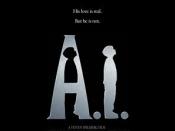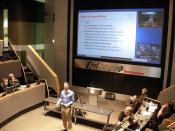Story of Artificial Intelligence
Robots already exist that are autonomous: they can learn, communicate and teach each other. They can navigate their way around our world and be linked to extremely powerful computers that will give them a processing capacity well beyond that of humans. How did scientists develop the technology to produce A.I. machines?
Mankind has always been fascinated by how the mind works and fascinated by the idea of creating intelligent machines. However, it wasn't until the development of the electronic computer in 1941 that technology was available to create machine intelligence.
The term 'Artificial Intelligence' was first coined in 1956 by an influential figure in the field, John McCarthy. He organised a two month workshop at Dartmouth college bringing together researchers interested in neural networks and the study of intelligence. Although this workshop did not lead to any new innovations, it did bring together the founders in AI and served to lay the groundwork for the future of A.I.
research. Following this workshop, an intensive wave of A.I. research began.
Centres for A.I. research began forming, such as Carnegie Mellon and MIT, and started concentrating their work on two main themes:
Firstly, creating systems that could efficiently solve problems, by limiting the search, such as the Logic Theorist, (considered as the first A.I. program), Geometry Theorem Prover, and SAINT.
Secondly, making systems that could learn by themselves, for example, the General Problem Solver(GPS), developed by Allen Newell and Herbert Simon, which was capable of solving a greater extent of common sense problems.
McCarthy continued to make significant contributions to AI, particularly in 1958 when he wrote a high-level programming language called LISP, which is still one of the most dominant AI programming languages.
A grant received by MIT from the US government in 1963 served...


